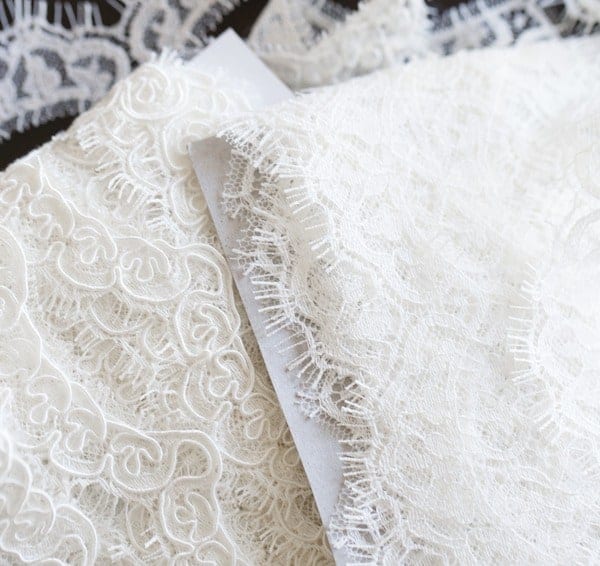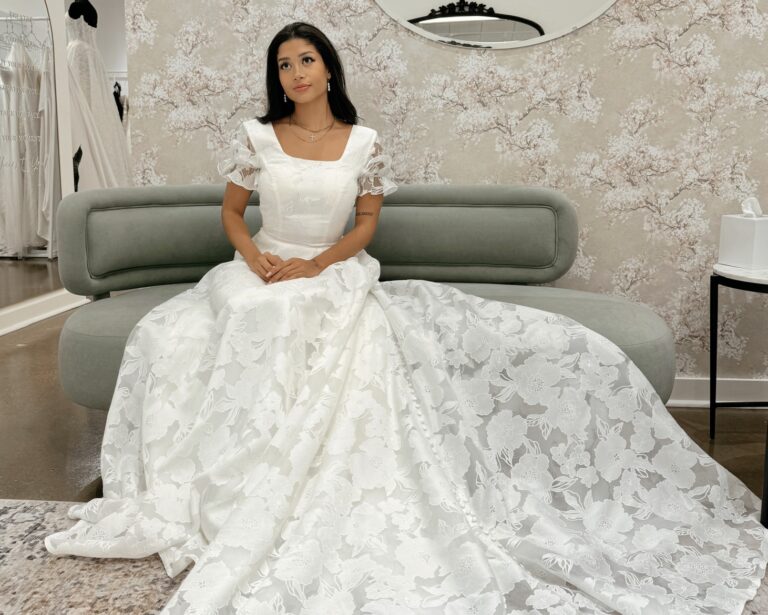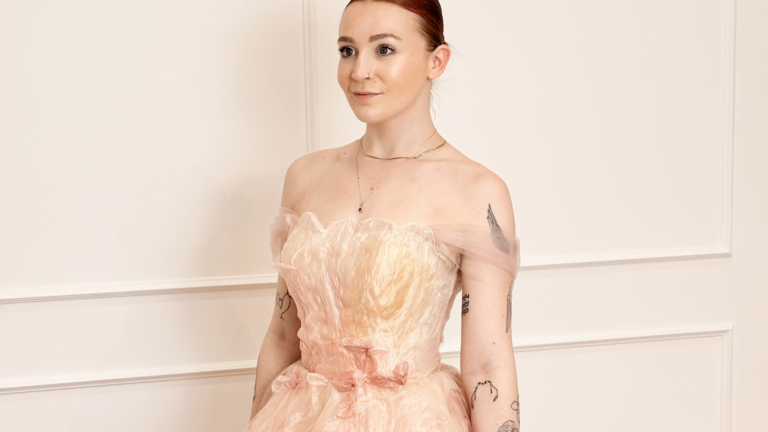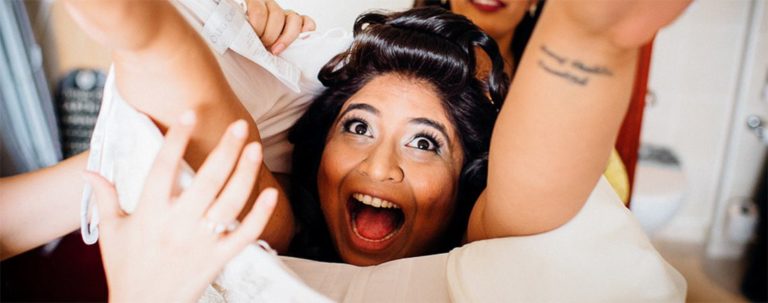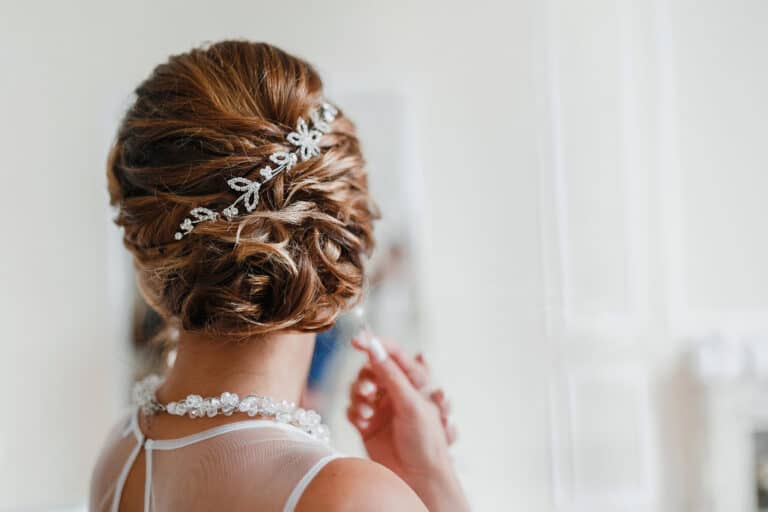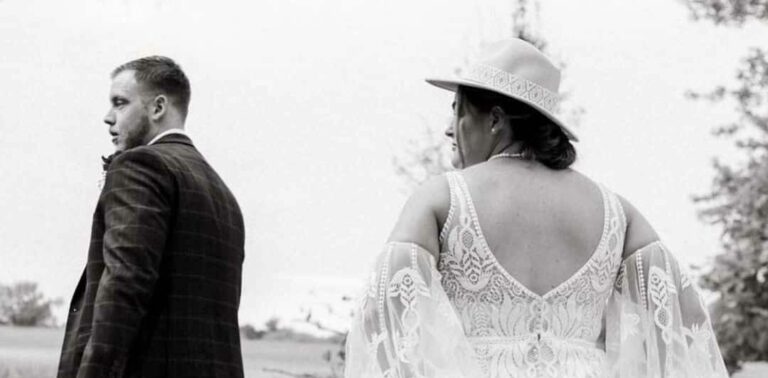Wedding Dress Fabric Glossary
Want a wedding dress that drapes beautifully? Poufs out beneath you? Glides down your curves? It’s all in the fabric.
Style, cut, texture, drape, and season are all-important factors in determining the best fabric for a wedding gown. The same style dress can look and feel quite different in a variety of fabrics, since each material is designed to produce a distinct effect. Some fabrics cling to the body, while others stand away. Some are cherished for their crispness, others for being light-as-air. Silk — a natural fiber that exudes an innate quality of refinement — is undoubtedly the most sought-after and cherished wedding dress material, noted for its resiliency, elasticity, and strength.
Silk threads are woven to create various fabrics, including satin, a densely-woven silk notable for its super-lustrous gloss; duchesse satin, a blend of silk and rayon that is lighter and more affordable than pure silk satin; charmeuse, a lightweight silk satin with a more subdued luster; and shantung, a low-sheen textured silk characterized by a rough, nubby quality. Then there are the gauzier, textured silks like chiffon, tulle, and organza — all used in multiple layers for gown skirts since they are transparent, but lightweight.
Batiste
A lightweight, soft, transparent fabric.
Brocade
A Jacquard-woven fabric with raised designs; traditionally popular for fall and winter, now also worn in warmer weather.
Charmeuse
A lightweight, semi-lustrous soft fabric, that is satin-like to the touch.
Chiffon
Delicate, sheer, and transparent — made from silk or rayon, with a soft finish; often layered because of its transparency, making it popular for overskirts, sheer sleeves, and wraps.
Crepe
A light, soft, and thin fabric with a crinkled surface.
Damask
Similar to brocade with raised designs, but woven in a much lighter weight.
Duchesse Satin
A lightweight hybrid of silk and rayon (or polyester) woven into a satin finish.
Dupioni
A finish similar to shantung, but with thicker, coarser fibers, and a slight sheen.
Faille
A structured, ribbed finish like grosgrain ribbon; usually quite substantial.
Gabardine
A tightly-woven, firm and durable finish, with single diagonal lines on the face.
Georgette
A sheer, lightweight fabric often made of polyester or silk with a crepe surface.
Illusion
A fine, sheer net fabric, generally used on sleeves or necklines.
Jersey
A very elastic knit fabric; the face has lengthwise ribs and the underside has crosswise ribs.
Moire
A heavy silk taffeta with a subtle, wavy design.
Organdy
A stiff transparent fabric.
Organza
Crisp and sheer like chiffon, with a stiffer texture similar in effect to tulle, but more flowing; popular for skirts, sleeves, backs, and overlays.
Peau de Soie
A soft satin-faced, high-quality cloth with a dull luster, fine ribs, and a grainy appearance.
Pique
A knit fabric with a waffle-weave appearance, pique has distinct sides. The outside resembles a honeycomb or waffle and the underside is flat and smooth.
Polyester
An inexpensive man-made fiber that can be woven into just about anything, including duchesse satin
Rayon
Similar to silk, but more elastic and affordable.
Satin
A heavy, smooth fabric with a high sheen on one side; very common in bridal gowns.
Silk
The most sought-after, cherished fiber for wedding dresses (and also the most expensive); there are several types with different textures: raw silk and silk mikado are just two examples.
Silk Gazar
A four-ply silk organza.
Silk Mikado
A brand of blended silk, usually heavier than 100-percent silk.
Silk-faced Satin
A smooth silk satin, with a glossy front and matte back.
Shantung
Similar to a raw silk, shantung is characterized by its rubbed texture.
Taffeta
Crisp and smooth, with a slight rib.
Tulle
Netting made of silk, nylon, or rayon; used primarily for skirts and veils (think ballerina tutus).
Velvet
A soft, thick fabric with a felted face and plain underside.

